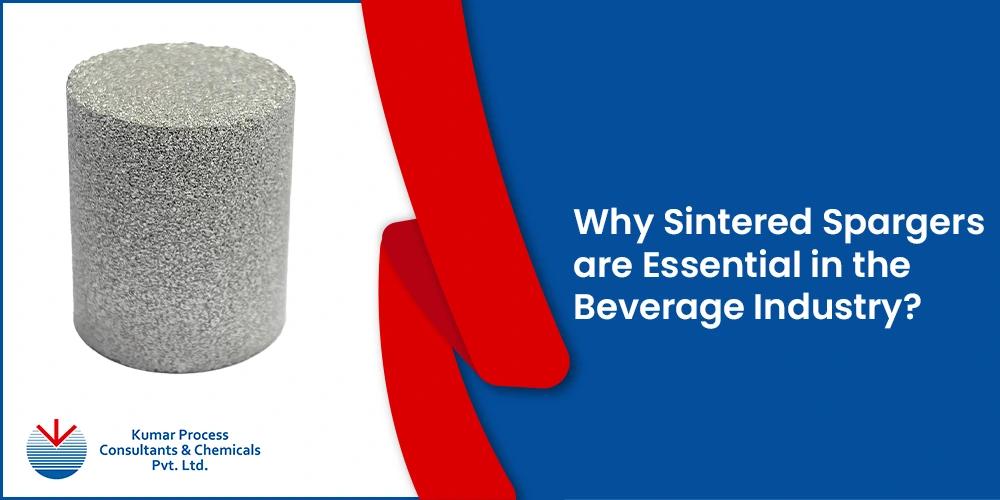


In the food and beverage processing industry, maintaining high standards of quality and efficiency is most important. Sintered porous metal media offers advanced filtration solutions across various manufacturing processes. Sintered metal filters are widely used in applications such as carbonation, aeration, ozone treatment, steam injection, and oxygen stripping, all of which are critical for product consistency and safety.
Here, in this blog we will discuss the role of sintered spargers in the food and beverage industry, where they contribute to enhanced process efficiency and product quality.
A Sintered sparger is a porous object made of metal powders, through which gases are passed to carry out various processes. The spargers are created by compressing metal powders into various shapes and bonding them through a sintering process. This results in a durable, inert structure ideal for a wide range of applications. In the food and beverage industry, sintered porous spargers are mainly used for their strength, efficiency, longevity, and ease of cleaning.
Typically made from 316L stainless steel, sintered spargers are designed to withstand harsh cleaning environments, including exposure to acids, caustics, chlorine, steam, and high-pressure. Their bi-directional flow capabilities allow them to function effectively regardless of the flow direction—whether from out to in or inside-out.
The uniform porosity of these filters ensures high-efficiency particulate removal, with media grades ranging from 0.2 to 100 micrometers (nominal) based on pore size. This versatility and robustness make sintered porous metal an essential element in various food and beverage processing applications.
In food processing, sintered porous spargers are essential for injecting gases into the process. The fine pores of the spargers are essential to creating fine bubbles, which have a large surface area to volume ratio.
\[ \frac{\text{Surface area of a bubble}}{\text{Volume of a bubble}} = \frac{4 \pi r^2}{\frac{4}{3} \pi r^3} = \frac{3}{r} \]
The ratio is inversely proportional to the radius of the bubble. Hence, as the radius decreases, the ratio increases. A high ratio is key to improving the mass transfer and the gas displacement process in the liquid. Traditionally, drilled pipes with holes as large as 3-5 mm were used for sparging. Now, with sintered porous metals, generating bubbles of the order of 3-5 microns is possible. Thus, the improvement is 1000 x. Finer bubbles also means that gas wastage is less, meaning less usage of expensive, food grade gases. Thus, spargers help in improving the process speed as well as process efficiency.
One example of sparging is using nitrogen to displace oxygen in food products, enhancing the longevity of perishable products and improving stability, appearance, aroma, and taste. The absence of oxygen retards the growth of aerobic bacteria, and keeps the product from degrading. Porous metal spargers are also used in direct steam injection for hot water preparation, heating liquids, and various bottling and canning operations.
Other conventional applications include carbonation for soda/beer and gas bulking for sauces and dressings, and pH control through CO2 injection in waste streams. For beverages such as water, beer, soda, and fruit juices, porous metal filters are used as inline and tank carbonators.
In chromatography, metal sintered filters and filter cups are utilized in HPLC columns to separate and analyze chemical mixtures, ensuring the quality of food products.
In chromatography, metal sintered filters and filter cups are utilized in HPLC columns to separate and analyze chemical mixtures, ensuring the quality of food products.
Sintered spargers are porous metal filters that enhance gas/liquid interaction in carbonation, aeration, and oxygen stripping, improving product consistency.
Sintered spargers are available in customized shapes and micron ratings. We optimize them for a lowest bubble size at highest allowable pressure drop.
Materials include 316L stainless steel, titanium, Hastelloy C276, and Nickel, selected for pressure tolerance and chemical resistance.
They remove contaminants like rust and scale from steam, preventing equipment damage and product contamination.